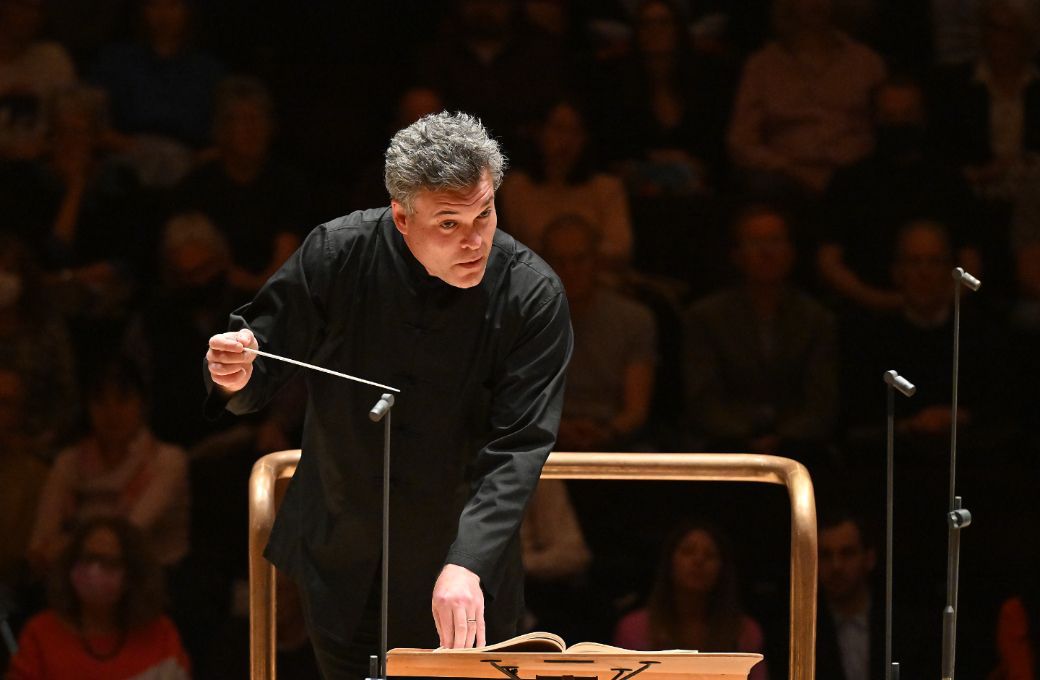It’s a perennial problem: what to pair with a Mahler symphony, one not long enough to fill an entire evening. Taking a symphony or piano concerto by Mozart has by now become utterly predictable. Choosing a work which matches the mood(s) of the main work makes more sense.

However, adding words to the mix is fraught with difficulty. Mahler knew what he was doing when he set German Romantic poets to music (and they didn’t just write about sweetness and light). Ryan Wigglesworth, here in charge of the BBC Symphony Orchestra for his latest song cycle Till Dawning, makes use of four of George Herbert’s poems. A clergyman, and one of the greatest of metaphysical poets, Herbert explores in his writings spiritual conflict, yet heaven-facing ecstasy is never far from the frame. Much of the orchestration in this piece has a Mahlerian feel to it, though it is that of the unfinished Tenth Symphony. Muted brass and edgy flutes in the first song, curls and swirls from scurrying woodwind at the start of the second, and a prevailing mood of acerbity and astringency, despite or perhaps because of a sparing use of the full orchestra. All this was partially offset at the start by the sounds of harp and celesta above a soft cushion of strings, but at the twice-repeated “Arise” in the third song there was no exhilaration, more a call-to-arms.
Elizabeth Watts, the soprano soloist, cut a Mary Magdalene-like figure, delivering the long lines of Herbert’s poetry with clarity and feeling, and moving seamlessly through the various registers as required. In the second song, her staccato delivery bordering at times on Sprechgesang lent a dramatic edge to the narrative. Yet the uniform pulse of this cycle together with the many metallic sonorities meant that this composer and this poet did not represent a match made in heaven.
Wigglesworth is not a demonstrative conductor. Using a long baton, which operates like an extension of his index finger, he exercises total control over the flow of a piece, even to the extent of beating his way through the opening trumpet solo of Mahler’s Symphony no. 5 in C sharp minor. Articulation throughout was precise, the playing of the BBC SO secure, notably from the brass, and the Adagietto had in its nine-and-a-half minutes the stamp of good taste in its avoidance of emotional excess.
While there were moments of subtlety and sensitivity, I couldn’t help feeling emotionally short-changed by this reading. The corpse may have been carried with an appropriate funereal tread in the first movement, but need the rest of the cortège have been quite so lifeless? There were already disturbing signs of a tendency to allow the brass to dominate the other textures, which together with the Barbican’s aural glare did little to temper the quality of assault. The second movement delivered on stormy vehemence but offered little by way of contrast: little warmth came from the lamenting cellos in their E flat minor monody, for instance.
Nor did I hear much evidence of a Viennese waltz in the central Scherzo. Here, as in the Finale, the beat was too strict to allow much hint of rubato, the limbs of the dancers heavily corseted. Ultimately, for this symphony to succeed in performance, there has to be a notable transition from darkness to light. The orchestral textures at the close continued to gleam and glisten, but did they radiate all that much heat and joy? Not for the first time I felt myself uncomfortably reminded of the official need to rejoice, as expressed in another composer’s Fifth Symphony.


